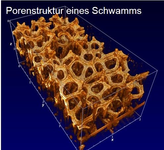A role of the basal ganglia and midbrain nuclei for initiation of motor sequences
NeuroImage : a journal of brain function. Bd. 39. H. 3. Elsevier BV 2008 S. 1356 - 1369
Erscheinungsjahr: 2008
ISBN/ISSN: 1095-9572
Publikationstyp: Zeitschriftenaufsatz
Sprache: Englisch
Doi/URN: 10.1016/j.neuroimage.2007.09.069
| Geprüft | Bibliothek |
Inhaltszusammenfassung
The mesial premotor cortex is crucial for planning sequential procedures and movement initiation. With event-related (ER) functional magnetic resonance imaging (fMRI) it has been possible to separate mesial premotor activation before, during, and after self-initiated movements and, thereby, to distinguish advance planning from execution. The mesial premotor cortex is part of distributed cortico-basal ganglia-thalamo-cortical networks but, to date, the subcortical contributions to self-initiat...The mesial premotor cortex is crucial for planning sequential procedures and movement initiation. With event-related (ER) functional magnetic resonance imaging (fMRI) it has been possible to separate mesial premotor activation before, during, and after self-initiated movements and, thereby, to distinguish advance planning from execution. The mesial premotor cortex is part of distributed cortico-basal ganglia-thalamo-cortical networks but, to date, the subcortical contributions to self-initiated movements are far less well understood. Using ER fMRI at 3T in 12 right-handed male volunteers, we studied the subcortical activation preceding an automated four-digit finger sequence that was either self-initiated or triggered externally by a visual cue. Beyond typical cortical activation increases in fronto-parietal regions, both initiation modes induced consistent subcortical activation in basal ganglia, midbrain (substantia nigra), and ipsilateral cerebellum. The planning phase of the internally initiated condition, when contrasted with the externally triggered condition, was associated with enhanced activity in frontal regions (mesial premotor cortex/rostral cingulate zone, dorsolateral prefrontal cortex), parietal regions (precuneus, inferior parietal cortex, encroaching onto V5/MT), insula, contralateral anterior putamen and midbrain (bilateral red nucleus/subthalamic nucleus). These data demonstrate the impact of initiation mode on planning-related activity in the ventral basal ganglia and interconnected midbrain nuclei, thereby stressing the crucial role of distributed cortico-basal ganglia-thalamo-cortical networks for self-initiated automated motor repertoires. Involvement of the substantia nigra during planning, as shown here, indicates dopaminergic gating of motor sequences.» weiterlesen» einklappen
Klassifikation
DFG Fachgebiet:
Neurowissenschaften
DDC Sachgruppe:
Medizin

